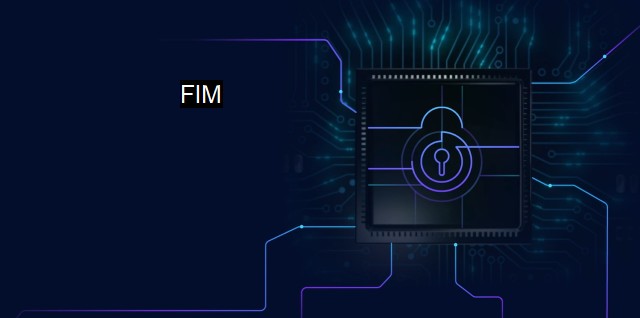What is FIM?
The Power and Significance of FIM Software in Cybersecurity Strategies
File Integrity Monitoring, commonly known as FIM, is an important process in the realm of cybersecurity and antivirus solutions, ensuring the incorruptibility and proper use of important system and application files. On the granular level, FIM is a technique that checks and verifies the integrity of files, ensuring that they have not been tampered with or corrupted.Encompassing a range of checks, FIM involves the application of various processes and mechanisms that continuously monitor and detect changes in files that could suggest a possible breach, while also validating the overall integrity of files, systems and software. Implementation of effective FIM techniques can provide substantial benefits, especially in terms of mitigating cybersecurity issues.
FIM works mainly by creating a baseline cryptographic checksum, usually of typical binary representation of a file. This baseline, which functions as a blueprint of the data in its verified and approved state, makes it possible to routinely compare the current status of files against the original baseline. If any changes or alterations occur in those files, the FIM system flags them for further investigation. These alerts permit immediate action, assisting in the neutralization of harmful entities that could negatively impact the system's security and functionality.
When FIM detects a change, it records it carefully and generates multifaceted reports. This feature immensely contributes to compliance with multiple regulatory requirements, such as Payment Card Industry Data Security Standard (PCI-DSS), Health Insurance Portability and Accountability Act (HIPAA), and the Sarbanes-Oxley Act (SOX), which necessitate detailed event logs for audit purposes. Since the information on 'who' made the change, 'when' the change was made, 'what' exactly was changed, and the nature of the change within these files is trapped, documented and reported, accountability and clear traceability are assured.
In the broader cybersecurity framework, FIM is seen as a component of intrusion detection systems (IDS). It helps identify unauthorized changes that may signal a security breach, such as changes made to critical system files by ransomware or other types of malware. Some advanced FIM solutions even have the ability to revert the file back to its original state, adding an extra layer of security.
FIM plays a crucial role in organizations as it contributes to maintaining their digital health by protecting data integrity. An absence of this robust security measure could see systems fall prey to malicious attacks that exploit vulnerability gaps, leading to unauthorized data modification or data loss.
Alongside virus scanning and firewalls, FIM constitutes one key pillar of multiple security defenses, referring specifically to threat detection. Where antivirus software passively identifies and neutralizes threats based on known signatures, FIM nature is rather proactive. It looks for abnormalities or changes, withholding potential threats from unleashing their destructive intent. Accordingly, the process is about optimizing system safety by complementing tools that prevent breaches in the first place.
FIM is particularly pertinent in sectors where substantial quantities of sensitive information are managed such as finance, healthcare or the government sector. These high-stakes areas require that stringent data integrity safeguards be in place and implies the ability to detect changes instantaneously and resolve problems swiftly.
File Integrity Monitoring is a powerful technique that plays a pivotal part in a comprehensive cybersecurity strategy. It protects organizations from internal and external threats, ensuring that system and application files remain secure and uncorrupted by continuously monitoring and flagging any suspicious changes. That makes it not merely a component in the cybersecurity domain but a necessity, given the escalating sophistication of malicious cyber activities.

FIM FAQs
What is FIM in cybersecurity?
FIM stands for File Integrity Monitoring. It is a security measure used in cybersecurity to detect and alert when any unauthorized changes occur in critical or sensitive files, directories, or systems.Why is FIM important in cybersecurity?
FIM is important because it helps detect and prevent unauthorized access and changes to critical files and systems. This can help prevent data breaches, malware infections, and other cybersecurity threats.What are some benefits of using FIM for antivirus software?
Some benefits of using FIM for antivirus software include improved detection and prevention of malware, enhanced visibility into system changes and activities, and quicker response to security incidents.What should be considered when selecting a FIM solution?
When selecting a FIM solution, it is important to consider factors such as ease of implementation and use, compatibility with existing systems, accuracy and reliability of alerts and notifications, and scalability and flexibility to adapt to changing security needs.| | A | | | B | | | C | | | D | | | E | | | F | | | G | | | H | | | I | | | J | | | K | | | L | | | M | |
| | N | | | O | | | P | | | Q | | | R | | | S | | | T | | | U | | | V | | | W | | | X | | | Y | | | Z | |
| | 1 | | | 2 | | | 3 | | | 4 | | | 7 | | | 8 | | |||||||